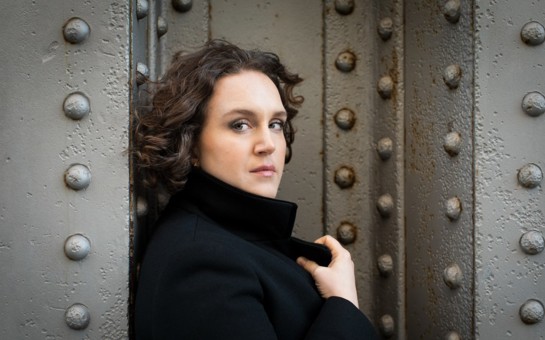- Helen Grime
Limina (2019)
- Chester Music Ltd (World)
Jointly commissioned by the Boston Symphony Orchestra and the Tanglewood Music Center, with generous support from the Harriett Eckstein New Commissions Fund. First performed on 15th July 2019 at Tanglewood Summer Music Festival, MA, by the Tanglewood Music Center Orchestra conducted by Killian Farrell.
- 3.3(ca).3(Ebcl).2+cbn/4.3.2+btbn.1/timp.3perc/hp.pf/str
- 12 min
Programme Note
Scored for a large orchestra (triple winds, three percussionists, piano, harp, and strings), Limina is a single movement of about 12 minutes’ length. Its energy, nuance, and multi-levelled activity require a high level of virtuosity and cohesion among the players.
“Limina” signifies “thresholds,” a point at which one state becomes another; in Grime’s piece the thresholds are between musical ideas representing expressive states. The idea of shifting states was suggested by a chapter in the Norwegian author Tarjei Vesaas’s 1963 novel The Ice Palace, which describes a young girl’s emotions as she moves between chambers within a frozen waterfall. Although some of Grime’s previous works have links to imagery or literary ideas, Limina’s connection to Vesaas’s narrative was unusually explicit and direct; the various chambers and the girl’s corresponding emotions determined the episodic structure of Grime’s piece. In spite of this specificity, once Grime was fully involved with the piece, purely musical, compositional concerns became the focus. Although there are a few clear shifts, these musical states are frequently layered and dovetailed with one another, leaving the listener balanced, as it were, right on that liminal boundary. The overlapping of larger ideas and small rhythmic variations among similar parts “blurs” the impact of any expressive state, paralleling the girl’s unsettled blend fear, joy, and confusion. The music also contrasts the girl’s physical fragility with the dispassionate strength and coldness of the ice.
Limina’s opening, marked “Bright, icy,” has a deliberately cold, somewhat off-putting character. This passage develops in increasingly complex waves, filling out the orchestra — shimmering, suspended strings with vibraphone, a glittering, rising figure in high woodwinds, a fragmented chorale in brass. The arpeggiated figure played by three solo violins signals a recurrent dream state. A warming, humanizing element appears with the expansion of the strings into the bass register; the various layers come into clearer focus with definite pulse and distinct melodic lines. Increasing density and intensity leads to a big sustained chord starting the final episode, marked “Ecstatic and tender.” The once-obscured chorale for winds comes to the foreground, but this is still interrupted by the strings’ breathless textures, as though it’s unwilling to take on the full burden of conclusion.
Programme note © 2019 Robert Kirzinger
Scores
Features

- Helen Grime: Orchestral Portrait
- The music of Helen Grime has been performed by leading orchestras around the world. Discover her orchestral music in this portrait highlighting eight of her meticulously-crafted, deeply felt works.

 Located in the UK
Located in the UK
 Located in the USA
Located in the USA
 Located in Europe
Located in Europe